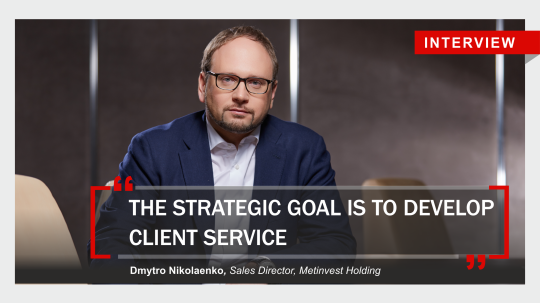#miclient
Text
MiCLIENT AT GITEX AFRICA 2023!
Get ready for some thrilling tech news!
We are delighted to announce that MiCLIENT is gearing up for GITEX AFRICA 2023, one of the biggest technology exhibitions in Africa!
We couldn't wait to share this early reminder with you. GITEX AFRICA 2023 will be held from 31 May to 2 June`2023 at Marrakech, Morocco. As our valued member, we wanted to keep you in the loop and ensure you have all the details.
We will be keeping you apprised with further detailed information regarding our participation in the event, as we get closer to the big day.
If you plan to attend the event. We'd love to connect with you in person at GITEX AFRICA 2023. It's a prime opportunity to showcase our solution MiCLIENT 2.0, and discuss how we can work together to drive innovation and explore potential collaboration opportunities.

Mark your calendar and make sure to swing by our booth. You don't want to miss it!
2 notes
·
View notes
Photo

@raimonsamso “[…], recuerdo haber mantenido provechosas sesiones con mis clientes en las cafeterias de los mejores hoteles de Barcelona. Unas instalaciones de lujo al alcance de cualquiera. […]”. #CódigoDinero #RaimonSamsó #cuandoempecé #agentefinancierolibre #agente #libre #agentefinanciero #despacho #estabaunasveces #enunrestaurante #enunacafetería #eneldespacho #micliente #dondefuera #adicionalmente #disponíade #despachoshabituales #unahabitación #mipiso #frentealmar #precisabainspiración #antesdedisponer #gabinetedecoaching #provechosassesiones #sesionesconmisclientes #lascafeterias #losmejoreshoteles #Barcelona #instalacionesdelujo #alalcancedecualquiera “[…]. Cuando empecé como agente financiero libre, mi despacho estaba unas veces en un restaurante, en una cafetería, o en el despacho de mi cliente… donde fuera. Adicionalmente, disponía de otros dos despachos habituales: una habitación de mi piso y un banco frente al mar para cuando precisaba inspiración. Antes de disponer de mi gabinete de coaching, recuerdo haber mantenido provechosas sesiones con mis clientes en las cafeterias de los mejores hoteles de Barcelona. Unas instalaciones de lujo al alcance de cualquiera. […]”. PG215:PR1↓↑[…]LN7-LN16—0146-14/10/20 https://instagram.com/stories/christianrafaelruiz/2465962901983679557?utm_source=ig_story_item_share&igshid=dea5cm0g2qvl https://www.instagram.com/p/CI6UYoQB1yY/?igshid=8aca1lwcfep8
#códigodinero#raimonsamsó#cuandoempecé#agentefinancierolibre#agente#libre#agentefinanciero#despacho#estabaunasveces#enunrestaurante#enunacafetería#eneldespacho#micliente#dondefuera#adicionalmente#disponíade#despachoshabituales#unahabitación#mipiso#frentealmar#precisabainspiración#antesdedisponer#gabinetedecoaching#provechosassesiones#sesionesconmisclientes#lascafeterias#losmejoreshoteles#barcelona#instalacionesdelujo#alalcancedecualquiera
0 notes
Text
DMYTRO NIKOLAENKO: "THE STRATEGIC GOAL IS TO DEVELOP CLIENT SERVICE"

The current year is still not over, but there have already been several significant events at Metinvest Holding. Among these are the completion of deals for the acquisition of new production assets and the growth of sales of metallurgical products by 38% overall and by 14% on the domestic market. In addition, as recounted by Dmytro Nikolaenko, director of sales at the holding, thanks to the development of cooperation with Ukrainian producers, the company succeeded in improving its positions in the long products segment and stabilised the supply of rebar to customers on the “home market”. The Group’s future plans are linked to further strengthening of its positions on the Ukrainian and global markets, both through the improvement of production processes and through an integrated programme for the transformation of sales with the goal of developing client service.
Dmytro Volodymyrovych, how do you evaluate Metinvest’s interim results since the beginning of the year?
The first half of the year was successful for all market players: Global steel prices rose against a backdrop of stable demand in all regions. Metinvest’s sales in the metallurgical sector grew by 38%, primarily from pig iron, slabs and square billets.
Sales of iron ore grew insignificantly and this is linked to the re-orientation of volumes from Asian markets to higher-margin ones in Europe and Ukraine.
Turning to the domestic market, we succeeded in increasing product sales in Ukraine by 14% thanks to increased demand for flat and long products in key, steel-consuming industries, such as machine building and construction.
How have the Group’s positions changed on the market for long products and rolled plates in Ukraine, taking into account the increase in sales?
In comparison with last year, our positions are unchanged across all product groups, with the exception of rebar. We have a stable presence on the market with products from Azovstal. We supply rolled products and wire from our partner, Dnepr Steel Plant. These volumes allowed us to compensate for the lost capacity of Yenakiieve Steel. The sale of steel sections made at the Promet Steel plant in Bulgaria is covering the requirements of our key clients and partners in the regions.
This year we also succeeded in establishing stable supplies of square billets produced at ArcelorMittal Kryvyi Rih. We also plan to further develop the relationship with this producer and plan to increase the supply of square billets through our sales network.
Does the Group require importation of rebar to Ukraine for the development of market positions in this segment?
At present we are not considering the importation of rebar as a means to increase sales. We are satisfied with our cooperation with ArcelorMittal Kryvyi Rih and planned to expand it. Today the domestic production fully maintains the needs of our network and partners in the regions.
In what other product segments are the Group developing its business? What are you undertaking for this?
Capital expenditures have increased nearly two-fold compared with the same period in 2017, demonstrating that we are actively implementing projects within the framework of the company’s Technological Strategy. The goal of the strategy is to increase the quality of our high-quality products.
Another key project in the first half of 2018 was the completion of the first stage of the reconstruction of the hot-rolled coil mill at Ilyich Steel. A new heat-treatment furnace was launched and a new heavy-duty coiling machine was installed. The implementation of project allowed for an increase in the weight of hot-rolled coils from 9.5 to 16.5 tonnes. In 2019, we plan to begin the output of 27 tonne coils.
In 2017, we were limited by the casting capacity of Ilyich Steel. At the end of 2018, we anticipate the launch of continuous casting machine no. 4 with a capacity of 2.5 million tonnes of premium-segment cast slabs. With the launch of the unit, the plant will able to increase productivity to 4 million tonnes per year.
One of the promising segments for the company remains coated steel, which projects were implemented in this area?
In September of this year, we completed a deal for the acquisition of Unisteel (Kryvyi Rih), a producer of galvanised steel. The deal strengthened our profile of high-margin products and permits us to work on the development of sales with Ukrainian and European products. The Metinvest product line was supplemented with galvanised steel with a thickness of 0.4-2.0mm with zinc covering from 60 to 350g/m2. The capacity of the plant is up to 100,000 tonnes of galvanised steel per year. Among the additional advantages of this product is the environmental technology of production and compliance with requirements of the European market. This expands our ability to supply products to European partners.
Has the strengthening of global protectionism impacted sales volumes and the Group’s positions on the international market?
The introduction of tariffs on hot-rolled steel on the European market had a negative impact on our sales. In 2017, the volume of deliveries of hot-rolled steel to the EU from our Ukrainian enterprises contracted by nearly half, to 0.6 million tonnes, and in the first half of 2018, supplies fell to a minimum level of less than 40,000 tonnes. But we re-directed volumes to the markets of North Africa, the Middle East, Turkey and other countries.
At the same time, we have stable sales volumes to Europe of plates and cold-rolled steel.
A direct indication of the differentiated approach to duties in the EU was disproportionate strengthening of a range of other importers to the EU, in particular Turkish suppliers (the growth of imports to the EU since the beginning of 2018 was more than 35% compared with the same period last year) and selected Russian companies (import growth doubled over the same period).
Under these conditions, has the sales strategy of the Group on the European market changed?
If we are talking about sales strategy, we are actively developing the European distribution network and working on the opening of new metals service centres in key regions for us in the EU. Plans include the integration of a line for cutting coils in our supply chain on the markets of Eastern Europe and Italy, as well as cutting and the further treatment of the surface of the sheet.
The preferred development model of the metal service centres for us is strategic partnership with existing operators on the market. Today, we are conducting talks with a series of potential partners who are interested in long-term cooperation with Metinvest.
What key goals has the Group set for 2019?
As I already said, we are continuing to strengthen positions in Europe and grow the share of high value-added products, to modernise production and launch new products.
As regards the company as a whole, we have a strategic goal of developing client service, which will become our additional competitive advantage. This year, we started the MiClient customer support programme. This is an integrated programme for the transformation of sales where the client is the working centre of any service in the company.
We are concentrated on the project for improving customer experience. We are committed to making the buying experience at Metinvest the most comfortable for the client. In order to achieve this, we are increasing the efficiency of the sales process and developing the service structure within the organisation and making the whole process transparent through the use of modern IT tools.
This year we introduced several initiatives valued by customers. For example, we introduced the option of in-time delivery for key markets. This flexibility allows the client to reduce the time required for project implementation and provides the ability to efficiently manage working capital.
Another example is a new technical service for customers. It is designed to solve systemic problems for the customer in processing metal products. Our team of technical experts helps to adapt the product to the client’s needs and make products meeting the most complex requirements for chemical content, mechanical properties and set up the client’s equipment to work with our product.
What new services can the Group’s clients expect in the future?
Near-term plans include the introduction of several IT projects, such as electronic document management and a personal online account for the customer. The goal of the projects are to increase the transparency of joint work and optimise, to the maximum extent, operational processes for completing deals and provide prompt support in real time. For example, after the introduction of the “personal account” project, any client will able to look at their warehouse stock, independently configure their order and generate an invoice. There will also be options for tracking orders in process, logistical routes and delivery dates for goods. The electronic account will have saved in a convenient format all information about the client’s previous cooperation with Metinvest, including every order and a historical database of prices. We plan that clients will be able to use a portion of these services already by 2019.
0 notes
Text
8 Things to Majorly Avoid in a Business Proposal
A business proposal is a document that outlines your company's offering and how it can benefit a potential client. It is an essential tool for winning new business, but it can also be a daunting task to write. If you want your proposal to be successful, it is important to avoid making any major mistakes. In this article, we will explore the major mistakes that should be avoided when creating a business proposal, helping you increase your chances of success.

Lack of clarity and structure: A business proposal should be clear, concise, and well-structured. Avoid using ambiguous language, jargon, or technical terms that may confuse or alienate your audience. Instead, strive for simplicity, ensuring that your proposal communicates your ideas effectively and is easy to follow. Utilize headings, subheadings, and bullet points to enhance readability.
Spelling and grammatical errors: A business proposal should be free of any errors in spelling or grammar. These errors will make you look unprofessional and will damage your credibility. Always proofread your proposal carefully before submitting it.
Failing to address the client's needs: One of the most common mistakes is focusing too much on your own company's capabilities and not enough on the client's specific requirements. Take the time to thoroughly understand the client's needs and tailor your proposal accordingly. Clearly articulate how your products, services, or solutions align with their goals and address their pain points.
Excessive length: A business proposal should be concise and to the point. There is no need to include every single detail about your company or your offering. Focus on the most important information and keep your proposal to a reasonable length.
Unrealistic promises: Do not make promises that you cannot keep. If you promise the client the moon, they will be disappointed when you cannot deliver. Be realistic about what you can offer and what you can achieve.
Too much self-promotion: A business proposal should be about the client, not about you. Avoid talking about yourself too much and focus on how your company can benefit the client.
Not being responsive:
If the client has any questions or requests, be sure to respond promptly. This will show that you are interested in their business and that you are reliable.
Overlooking the competition: Ignoring or downplaying your competitors in your business proposal can be detrimental. Clients want to know how your offerings compare and what sets you apart from others in the market. Conduct thorough market research to identify key competitors and highlight your unique value proposition.
Secure business opportunities by leveraging the power of MiCLENT
With MiCLENT, you can customize each proposal, quote, or contract to cater specifically to your clients' needs and preferences. The software offers a wide range of templates, styles, and formatting options, allowing you to create documents that align with your brand identity and resonate with your target audience.
#miclient#successformula#competition#proposal management software#proposal writing#business outcomes#leadership
1 note
·
View note
Text

Monday is here, and with it comes a fresh start and new opportunities to learn and grow. Let's approach this week with creativity, innovation, and a determination to succeed, drawing upon the experiences we've gained from past challenges.
1 note
·
View note
Text
The importance of emotional intelligence in the workplace

How would you define emotional intelligence?
Emotional intelligence, or EQ, refers to the ability to recognize, understand, and manage one’s own emotions, as well as those of others. Emotional intelligence is an important skill to have in the workplace, as it can help individuals navigate complex social dynamics and build strong relationships with colleagues and clients. Emotional intelligence involves the ability to recognize and understand one’s own emotions, as well as the emotions of others, and to use that knowledge to manage one’s own behavior and interactions with others.
People with high emotional intelligence are often effective communicators, problem-solvers, and team players, as they are able to navigate difficult situations with empathy and perspective. In the workplace, emotional intelligence can contribute to a positive work culture, improve collaboration and productivity, and enhance overall job satisfaction.
In this blog, we will discuss the importance of emotional intelligence in the workplace and how it can benefit both employees and organizations.
Effective Communication
One of the most important parts of every workplace is communication. Since they can interpret nonverbal clues like body language and tone of voice and comprehend the emotions behind them, those with high EQ are better communicators. Because to their ability to adapt their communication style to the context and the listener, they are able to have more effective talks with fewer misconceptions.
Conflict Resolution
Any workplace will inevitably see conflict, but those with high EQ are better prepared to handle it. They are able to recognize the underlying feelings causing the disagreement, feel sympathy for all parties, and come to an amicable agreement. For leaders, who must negotiate a variety of personalities and working styles to keep their teams operating efficiently, this capacity to manage conflict is especially crucial.
Teamwork
Those with high EQ are better team players because they are empathic and comprehend other people’s emotions. They are able to forge closer bonds with their coworkers and forge a more solid team thanks to this knowledge. Also, they are more adept at settling disputes and avoiding misunderstandings, which promotes trust and betters communication within the team.
Customer Service
In customer service positions, where employees must deal with a wide spectrum of personalities and emotions, emotional intelligence is particularly crucial. Customers’ emotions may be read by those with high EQ, who can then respond properly by calming them down, sharing their displeasure, or expressing their joy. Customer loyalty can be increased and customer satisfaction can be raised by having this ability to emotionally connect with them.
Leadership
Effective management of teams is more likely for leaders with high EQ. They are able to adapt their leadership style to their team members’ emotions and inspire them since they are aware of their feelings. Also, they are more adept at giving constructive criticism and settling disputes, which promotes a climate of trust and respect within the team.
Stress Management
Work can be stressful, and people with high EQ are better able to manage that stress. They can recognize the signs of stress in themselves and others, and take steps to reduce it. This might mean taking a break, talking to a colleague, or finding another way to de-stress. By managing their own stress, high EQ individuals are better able to manage their workloads and maintain their productivity.
Improved Decision Making

Overall, emotional intelligence is an essential trait in the workplace. It can improve communication, conflict resolution, teamwork, customer service, leadership, stress management, and decision making. By developing our emotional intelligence, we can improve our relationships with our colleagues and customers, build stronger teams, and become more effective leaders.
#emotional#emotional intelligence#employees#employee wellbeing#workplace#business intelligence#miclient
1 note
·
View note
Text
The Fusion of Excellence: MiCLIENT and IndiaMART/Tradeindia Integration

Indiamart and Tradeindia are two of the largest B2B marketplaces in India. They offer a vast network of potential customers to businesses of all sizes. However, with so many businesses competing for attention, it can be difficult to stand out and attract the right leads.
Sales automation platforms can help businesses to streamline their sales processes and improve their chances of closing deals.
Let's explore how this integration can help manage and boost your sales efforts.
Expanded Lead Pool and Effortless Management
The integration facilitates the seamless transfer of leads from IndiaMART and Tradeindia directly into MiCLIENT. This automation ensures that no opportunity goes unnoticed.
The result? A more extensive database of potential leads at your fingertips, meticulously organized and ready for action.
Streamlined Lead Nurturing
Lead nurturing is an art. MiCLIENT, empowered by the integration, excels in this area. With its capabilities for automated follow-ups, you can nurture leads without the manual hassle.
As leads from IndiaMART and Tradeindia are assimilated, MiCLIENT can initiate personalized follow-up sequences, ensuring consistent engagement and nurturing.
Tailored Engagement and Personalization
MiCLIENT's integration with IndiaMART and Tradeindia enables data-driven personalization. As leads interact with your content, MiCLIENT can capture these interactions. Subsequently, your sales team can tailor their engagement based on these insights, creating meaningful connections that resonate with potential clients.
Efficient Quote Generation
Generating quotes is a critical phase in the sales process. MiCLIENT's robust capabilities shine here.
With data from IndiaMART and Tradeindia, MiCLIENT can automatically populate quotes, streamlining the process and minimizing errors.
Data-Backed Decision Making
Informed decisions drive growth. The integrated setup offers enhanced analytics, allowing you to track and analyze critical metrics.
Gain insights into lead engagement, quote acceptance rates, and conversion patterns. These insights are invaluable for refining your sales strategies.
Centralized Communication Hub
MiCLIENT serves as the central hub for communication and collaboration. By integrating it with IndiaMART and Tradeindia, you consolidate all lead information and interactions in one platform. This simplifies communication and fosters efficient teamwork.
Elevating Efficiency and Impact
Automation amplifies efficiency. With manual tasks minimized, your sales team can invest more time in high-impact activities like relationship-building and strategic planning.
In conclusion, the integration of MiCLIENT with IndiaMART and Tradeindia stands as a transformative force in enhancing sales performance. Seamlessly managing leads, nurturing relationships, and generating quotes become not just tasks but streamlined processes.
2 notes
·
View notes
Text
Navigating the B2B Sales Landscape: Overcoming Common Obstacles with Ease

In the world of B2B sales, success often hinges on the ability to navigate and overcome various obstacles that can hinder your progress. From fierce competition to decision-making delays, these challenges can test even the most seasoned sales professionals. However, armed with the right strategies and a proactive mindset, you can overcome these hurdles and achieve your sales targets. In this article, we will explore five common B2B sales obstacles and provide actionable tips on how to overcome them.
1. Identifying the Decision Maker
First challenge in B2B sales is identifying the right decision maker within a company. With multiple stakeholders involved in the buying process, it's essential to pinpoint the person with the authority to make purchasing decisions.
To overcome this obstacle, invest time in research and utilize networking tools to uncover key contacts. Building relationships with gatekeepers and influencers can also help you gain access to decision makers. Additionally, creating compelling content and presentations that resonate with various stakeholders can facilitate buy-in from the entire team.
2. Long sales cycles
One of the biggest challenges in B2B sales is the long sales cycle. It can take months or even years to close a deal with enterprise customer. This can be frustrating for salespeople, who may feel like they are not making any progress. To reduce your sales cycle period, try implementing a sales automation solution for your business, such as MiCLIENT.
3. Handling Price Objections
Price objections are a common obstacle faced by B2B sales professionals. When prospects express concerns about pricing, it's crucial to focus on the value and return on investment your product or service offers. Highlight the long-term benefits, cost savings, and potential revenue growth that your solution can deliver.
Utilize case studies and success stories to demonstrate the value you've provided to similar clients. Additionally, offer flexible pricing options or discounts when feasible, ensuring that you address any financial concerns your prospects may have.
4. Dealing with Competition
Competition is a constant reality in the B2B sales landscape. To stand out from the crowd, differentiate yourself by showcasing your unique selling points and competitive advantages. Thoroughly understand your competitors' offerings and articulate why your solution is superior.
Tailor your sales pitch to address your prospects' pain points directly and emphasize how your product or service can solve their specific challenges more effectively. Building strong relationships with your existing customers and leveraging their testimonials can also provide a powerful endorsement of your solution's superiority.
5. Overcoming Decision-Making Delays
B2B sales cycles can be long, often marked by decision-making delays. To minimize these delays, establish clear timelines and expectations with your prospects early on in the sales process. Ensure that you have a deep understanding of their decision-making processes, identify potential roadblocks, and proactively address them.
Regularly follow up with your prospects and provide additional information or resources as needed. By maintaining consistent communication and demonstrating your commitment to their success, you can reduce decision-making delays and keep the sales process moving forward.
6. Building Trust and Relationships
Building strong relationships with your prospects and clients requires consistent communication, active listening, and genuine empathy. Take the time to understand their unique needs and tailor your solutions accordingly.
Offer valuable insights and thought leadership through personalized content and engaging interactions. Investing in long-term relationships rather than focusing solely on immediate sales can help you earn trust, enhance customer loyalty, and pave the way for future business opportunities.
Key Takeaways
B2B sales can be a challenging endeavor, but with a proactive approach and the right strategies, you can overcome common obstacles and achieve success. Embrace these challenges as opportunities for growth, continuously adapt your approach, and consistently provide value to your prospects and clients. With persistence and determination, you can thrive in the B2B sales arena.
#sales automation software#proposal management software#salestips#obstacles#saas technology#sales automation#msme growth#growth
2 notes
·
View notes
Text
The Dos and Don’ts of Proposal Management

Proposal management is a critical process that involves preparing, submitting, and tracking proposals to win new business or funding. It’s a complex process that requires attention to detail, effective communication, and strategic thinking. In this article, we will discuss the dos and don’ts of proposal management to help you increase your chances of success.
Dos:
Understand the requirements: Before you start working on a proposal, make sure you thoroughly understand the requirements. Read the RFP (Request for Proposal) or RFQ (Request for Quotation) carefully, and ensure you meet all the criteria. Highlight important information and ask questions if anything is unclear.
Develop a plan: Create a proposal plan that outlines the steps involved in preparing the proposal. This plan should include a timeline, responsibilities, and milestones to ensure that everyone is on the same page.
Assign roles: Assign roles and responsibilities to team members based on their skills and expertise. Ensure everyone knows their tasks, deadlines, and how they contribute to the proposal.
Research: Research your target audience, competitors, and industry trends to tailor your proposal to the needs of the client. Use this information to write compelling proposals that address the client’s pain points.
Write clearly: Use clear and concise language in your proposal. Avoid jargon and technical terms that the client may not understand. Use headings, bullet points, and graphics to break up the text and make it more readable.
Don’ts:
Rush: Proposal management is a time-consuming process that requires attention to detail. Rushing through the process can lead to errors and oversights that can hurt your chances of success.
Use generic proposals: Don’t use generic proposals for all clients. Tailor each proposal to the specific needs of the client, and highlight how your solution can help them achieve their goals.
Neglect the executive summary: The executive summary is the most critical part of the proposal. It’s the first thing the client will read, and it should grab their attention and persuade them to read the rest of the proposal. Don’t neglect it or rush through it.
Ignore formatting: Formatting is crucial in proposal management. Use a consistent format throughout the proposal, and ensure it’s easy to read and visually appealing. Use headers, subheaders, and bullet points to break up the text and make it more readable.
Submit late: Late submissions are a sure way to lose the opportunity. Ensure you have enough time to prepare and review the proposal before the deadline. Submit the proposal early to avoid any last-minute glitches.

In conclusion, proposal management is a complex process that requires attention to detail, effective communication, and strategic thinking. For efficient proposal management, use MiCLIENT. Register now for a 14-day free trial.
2 notes
·
View notes
Text
Why a One-Size-Fits-All Proposal Won’t Cut It in B2B Sales

Every client is different. They have different needs, goals, and budget constraints. That's why it's essential to customize your proposal for each client.
A one-size-fits-all approach will never be as effective as a proposal that is tailored to the specific needs of the client.
First impressions can make or break deals, customizing your proposals for each type of client and industry isn't just a smart move – it's a deal breaker that can make all the difference.
Imagine you're a traveler looking for the perfect outfit to wear to a destination wedding. Would you choose a generic, one-size-fits-all attire, or opt for a bespoke ensemble that complements the unique ambiance of the event?
Similarly, in the business arena, tailoring your proposals is the key to success, ensuring that you stand out, connect, and win over clients. Here's why this art of tailoring is an essential game changer.
Here are some of the reasons why customizing your proposal is essential:
Standing Out in a Crowded Field
In a world inundated with generic proposals, a customized pitch is like a beacon of uniqueness. When clients receive a proposal that speaks directly to their situation and aspirations, it grabs their attention and sets you apart from the competition.
Your proposal becomes memorable, leaving a lasting impression that enhances your chances of being selected.
It builds trust and credibility.
When you customize your proposal, it shows that you're a professional who takes the time to do their research and who is confident in their ability to deliver results.
It shows that you understand the client's needs. When you take the time to understand the client's needs, it shows that you're serious about their business and that you're committed to helping them achieve their goals.
Increases the chances of closing the deal
When a client sees that you've taken the time to understand their needs and to tailor your proposal to their specific situation, they're more likely to be impressed and to be willing to do business with you.
Adaptability Signals Flexibility
Different clients have varying preferences and expectations. Customizing your proposals demonstrates your flexibility and willingness to adapt to each client's preferences.
This adaptability extends beyond the proposal stage, assuring clients that you can tailor your services to suit their evolving needs throughout the partnership.
It's a Reflection of Your Brand
Just as an artisan's masterpiece reflects their craftsmanship, a tailor-made proposal is a reflection of your brand identity and values. It showcases your dedication to excellence and your commitment to going the extra mile.
This consistent attention to detail enhances your brand's reputation and establishes a reputation for quality and reliability.
Better Communication, Better Results
Customized proposals facilitate better communication between you and your client. When your proposal resonates with their vision, they can more easily visualize the collaboration and outcomes. This clarity minimizes misunderstandings, aligns expectations, and ultimately leads to better results.
So, the next time you sit down to draft a proposal, of course with help of MiCLIENT, remember the impact of personalization – it's not just a choice, it's a business imperative.
#sales automation#cpq software#sales automation software#proposal management software#saas technology
1 note
·
View note
Text
Why Closing Deals on Email Threads Can Become a Never-Ending Task
Where time is of the essence and every prospect holds the potential for revenue, the art of closing deals can sometimes resemble an intricate journey. A particularly intricate facet of this venture is the endeavor to seal deals through email exchanges — an arena where replies can linger, clarity can waver, and the finish line might appear ever-elusive.

Then comes the follow-up game. You send more emails, each one sounding a bit more anxious than the last. Suddenly, your email thread starts looking like a long chain of messages, and it feels like you’re stuck in a loop, going back and forth without getting any closer to closing the deal.
Why does this happen? Well, that’s what we’re here to uncover. We’ll dig into why dealing with potential customers over email can turn into a never-ending challenge. And don’t worry, we won’t leave you hanging — we’ll also share some smart tricks to escape this email maze and actually get those deals done.
The Communication Enigma
Imagine this scenario: you’ve meticulously crafted an email that encapsulates your product’s value proposition, benefits, and a compelling call to action. You hit “send” with a sense of anticipation, only to find your message drifting into the vast expanse of an inbox, surrounded by countless other messages clamoring for attention. This is where the conundrum begins.
The Silence that Echoes
The initial silence that often follows the dispatch of an email can be deafening. Days turn into weeks, and the void remains. You begin to question whether your meticulously crafted pitch vanished into the digital ether, or worse, got buried under an avalanche of incoming emails.
The Chain Reaction
In an effort to rekindle the conversation, you follow up — once, twice, perhaps even thrice. Before you know it, your email thread has metamorphosed into a seemingly never-ending chain of messages, each subsequent one slightly more desperate than the last. What started as a well-intentioned follow-up becomes an intricate dance of diplomacy and persistence.
The Lost Context
As the thread lengthens, the risk of losing context becomes palpable. Your prospect might misinterpret your intent, forget crucial details, or, worst of all, lose interest altogether. Suddenly, the thread that was meant to streamline communication has become a convoluted saga, leading you further away from the coveted “closed deal” milestone.
Escaping the Loop
Breaking free from the cycle of endless email threads requires a strategic approach that combines the precision of a surgeon with the finesse of a negotiator.
Strategic Timing
Instead of bombarding your prospect with a flurry of follow-ups, consider spacing them strategically. A well-timed message can rekindle interest without overwhelming the recipient.
Compelling Call to Action
Craft your emails with a clear and compelling call to action. Make it easy for your prospect to understand the next steps and the value they stand to gain from engaging further.
Multi-Channel Engagement
Don’t put all your eggs in the email basket. Utilize a multi-channel approach, integrating phone calls, social media interactions, and personalized video messages to capture your prospect’s attention and keep them engaged.
Value-Driven Persistence
Instead of repeating the same message, provide value with each interaction. Share relevant insights, success stories, or tailored solutions that showcase your dedication and expertise. For best solution use a sales enablement software like MiCLIENT.
Closing Thoughts
While closing deals on email threads can indeed become a never-ending task, it’s crucial to remember that it’s a challenge rather than an insurmountable barrier. By understanding the dynamics at play, employing strategic tactics, and maintaining a persistent yet value-driven approach, you can navigate the email labyrinth and emerge victorious, sealing deals with finesse and efficacy.
In Conclusion
Remember, it’s not about the length of the thread, but the impact of each interaction that paves the way to a successful close. The difficulty of closing deals via email arises from its impersonal nature. Recognizing these challenges and implementing strategies to mitigate them can transform email communication from an enigma into a powerful tool for sealing the deal. So, equip yourself with the right tactics like using sales automation solution in your business processes.
0 notes
Text
Busting common CPQ (Configure, Price, Quote) Myths

Organizations are constantly seeking ways to enhance their sales processes, improve efficiency, and boost customer satisfaction. Configure, Price, Quote (CPQ) solutions have emerged as a powerful tool to streamline complex sales cycles and enable sales teams to deliver accurate and tailored quotes promptly. Despite their widespread adoption, CPQ platforms have been the subject of several misconceptions and myths. In this blog, we delve into the reality behind CPQ and debunk some of the most prevalent myths surrounding it.
Myth #1: CPQ is Only for Large Enterprises
One of the most persistent myths about CPQ is that it is exclusively reserved for large enterprises with massive product catalogs. In reality, CPQ solutions are scalable and can benefit businesses of all sizes. Small and medium-sized enterprises (SMEs) can leverage CPQ to automate their sales processes, reduce errors, and accelerate deal closures. The modular nature of CPQ allows companies to customize and tailor the solution according to their specific needs and budget.
Myth #2: CPQ is Complex and Difficult to Implement
Some businesses may shy away from adopting CPQ due to the perception that implementation is complex and time-consuming. While it's true that deploying a CPQ system requires planning and coordination, modern cloud-based CPQ solutions have simplified the implementation process significantly. Many CPQ vendors now offer user-friendly interfaces and intuitive tools that reduce the learning curve and facilitate seamless integration with existing CRM and ERP systems.
Myth #3: CPQ is Only for Sales Teams
CPQ solutions are often associated solely with sales teams. However, the benefits of CPQ extend beyond the sales department. CPQ tools can also empower marketing teams to create targeted promotions based on customer preferences and historical data. Moreover, CPQ enables collaboration between sales, engineering, and production teams, fostering a cohesive workflow that ensures accurate product configurations and timely deliveries.
Myth #4: CPQ is Expensive and Not Cost-Effective
It's a common misconception that CPQ solutions come with a hefty price tag, making them unaffordable for many businesses. While CPQ implementation may have been expensive in the past, the competitive market has driven down costs significantly. Moreover, the long-term benefits of CPQ, such as increased sales efficiency, reduced errors, and improved customer satisfaction, far outweigh the initial investment, making CPQ a highly cost-effective solution in the long run.
Myth #5: CPQ is a One-Time Solution
CPQ is not a one-and-done deal; it requires continuous updates and maintenance to remain effective. As businesses evolve, so do their product offerings and pricing strategies. A well-maintained CPQ solution ensures that the sales team always has access to the most up-to-date product information and pricing, enabling them to provide accurate quotes
Myth #6: CPQ will replace my sales team.
This is a fear that many sales professionals have. However, CPQ software is not designed to replace sales teams. Instead, it is designed to help sales teams be more productive and efficient. CPQ software can automate many of the time-consuming tasks involved in the sales process, freeing up sales professionals to focus on what they do best: selling.
Configure, Price, Quote (CPQ) solutions have emerged as a game-changer in the sales and quoting process, revolutionizing how businesses approach complex sales cycles. By debunking these common myths surrounding CPQ, we hope to encourage businesses of all sizes to explore the potential benefits of implementing CPQ solutions. MiCLIENT CPQ boasts an intuitive user interface that simplifies the user experience, reducing the learning curve for your sales team. The user-friendly design ensures that your team can quickly adapt to the platform, allowing them to focus on what they do best - building relationships and closing deals.
#technology trends#sales software#cpq software#saas technology#proposal management software#salesforce cpq
0 notes
Text
Mastering Essential Tools and Technology for Modern Sales Professionals

Investing in technology tools is a top priority for sales organizations of all shapes and sizes. Doing so empowers your reps while also ensuring that your company stays competitive in the modern sales landscape. Sales professionals need to leverage the right tools and technology to enhance their productivity, efficiency, and success. This comprehensive guide will explore essential tools and technologies that empower sales professionals to achieve their goals.
What is Sales Technology?
Sales technology is a set of tools and applications that are designed to support and augment the productivity of sales representatives. Sales technologies are largely focused on improving sales execution or automation and increasing sales effectiveness.
Benefits of Investing in Sales Technology
Streamlined Sales Processes: Sales technology, such as customer relationship management (CRM) systems, automates manual tasks, streamlines workflows, and centralizes sales data. This streamlining of processes saves time, increases efficiency, and enables sales professionals to focus on selling rather than administrative tasks.
Better Sales Performance: Investing in sales technology provides valuable insights and analytics that allow sales professionals to make data-driven decisions
Increased visibility: Sales technology can help sales teams to get a better understanding of their sales process, which can help them to identify areas for improvement.
Improved decision-making: Sales technology can help sales teams to make better decisions by providing them with insights into their sales process and performance.
Types of Sales Technology to Consider
CRM (Customer Relationship Management): A CRM system is a fundamental tool for sales professionals. It centralizes customer data, tracks leads and opportunities, and automates sales processes. Investing in a CRM system helps sales professionals streamline their workflows, improve collaboration, and gain insights for effective sales strategies.
Lead Enrichment Tools: Lead enrichment tools provide valuable information about potential customers. These tools enhance prospecting efforts by providing details like contact information, company data, and job titles. Sales professionals can use this information to target and personalize their outreach, resulting in higher-quality leads and improved conversion rates.
Sales Enablement & Engagement Tools: Sales enablement tools empower sales professionals with features like email automation, sales content management, and sales playbooks. These tools improve communication, enable personalized engagement with prospects, and facilitate efficient follow-ups. By leveraging sales enablement tools, sales reps can streamline their outreach efforts and provide a consistent and engaging sales experience.
Sales Analytics Tools: Sales analytics tools offer robust analytics and reporting capabilities. These tools provide insights into sales performance metrics, conversion rates, revenue trends, and customer behavior. By analyzing this data, sales professionals can identify strengths, weaknesses, and areas for improvement in their sales processes, enabling them to make data-driven decisions and optimize their strategies.
CPQ + CRM Tools: Configure, Price, Quote (CPQ) tools integrated with CRM systems streamline the quoting and proposal process. Tools like MiCLIENT enable sales professionals to generate accurate quotes, configure complex product offerings, and create professional proposals. This integration enhances efficiency, reduces errors, and improves the overall quoting experience for both sales reps and customers.
Conclusion
Sales technology is an essential tool for modern sales professionals. By choosing the right tools for your needs, you can automate repetitive tasks, track your performance, and connect with prospects and customers in a more personal way.
0 notes
Text
Transforming Sales Team Culture: Building Trust and Collaboration for Success

Sales team's success relies not only on individual talents but also on the collective power of trust and collaboration. Transforming the sales team culture to foster these essential qualities can lead to improved performance, higher morale, and increased customer satisfaction. This blog explores effective strategies to build trust and collaboration within sales teams for long-term success.
1. Establishing a Foundation of Trust
Leaders must create an environment where team members feel safe and supported, encouraging open and honest communication. Regular team meetings, one-on-one check-ins, and feedback sessions provide opportunities for dialogue and help build trust. Leaders should also lead by example, demonstrating integrity and transparency in their actions. When trust is established, team members are more likely to take risks, share ideas, and collaborate effectively.
2. Promoting a Collaborative Mindset
Sales teams thrive on collaboration, as it fosters a sense of collective responsibility and ownership. Encourage team members to collaborate by emphasizing the importance of sharing knowledge, expertise, and resources.
Implement collaborative tools and platforms that facilitate communication and idea sharing. Foster a culture where teamwork is celebrated and individuals are encouraged to seek support from one another. By promoting a collaborative mindset, sales teams can leverage the diverse strengths of their members, leading to innovative solutions and improved customer experiences.
3. Encouraging Cross-Functional Collaboration
Sales teams do not operate in isolation; their success often depends on cross-functional collaboration with other departments. Encourage interactions and joint projects between sales, marketing, customer service, and product development teams. Break down silos and create opportunities for employees from different functions to collaborate and share insights. This cross-pollination of ideas and perspectives can lead to better alignment, improved problem-solving, and ultimately, a stronger sales performance.
4. Recognizing and Celebrating Achievements
Acknowledging and celebrating achievements is crucial in building a positive and collaborative team culture. Recognize individual and team successes through public praise, rewards, and incentives. Celebrate milestones, sales wins, and exceptional performances to boost morale and foster a sense of camaraderie. By creating a culture of appreciation, sales teams will feel valued, motivated, and more inclined to support and celebrate each other's achievements, leading to a more cohesive and collaborative environment.
5. Providing the Right Solutions and Resources
It is essential to provide your sales team with the right solutions and resources they need to excel in their roles. Invest in training programs and professional development opportunities that enhance their skills and knowledge. One effective solution is to suggest implementing MiCLIENT, a comprehensive sales enablement platform.
Conclusion
Building a culture of trust and collaboration is vital for sales team success. By establishing trust, promoting collaboration, encouraging cross-functional interactions, and celebrating achievements, sales teams can unlock their full potential, driving improved performance, enhanced customer experiences, and long-term success in today's competitive marketplace.
0 notes
Text

MiCLIENT can help sales teams increase their sales productivity by automating many of the tasks involved in the sales process. This can lead to improved bottom line results.
#sales#goingglobal#salesautomation#cpq#software#salesenablement
1 note
·
View note